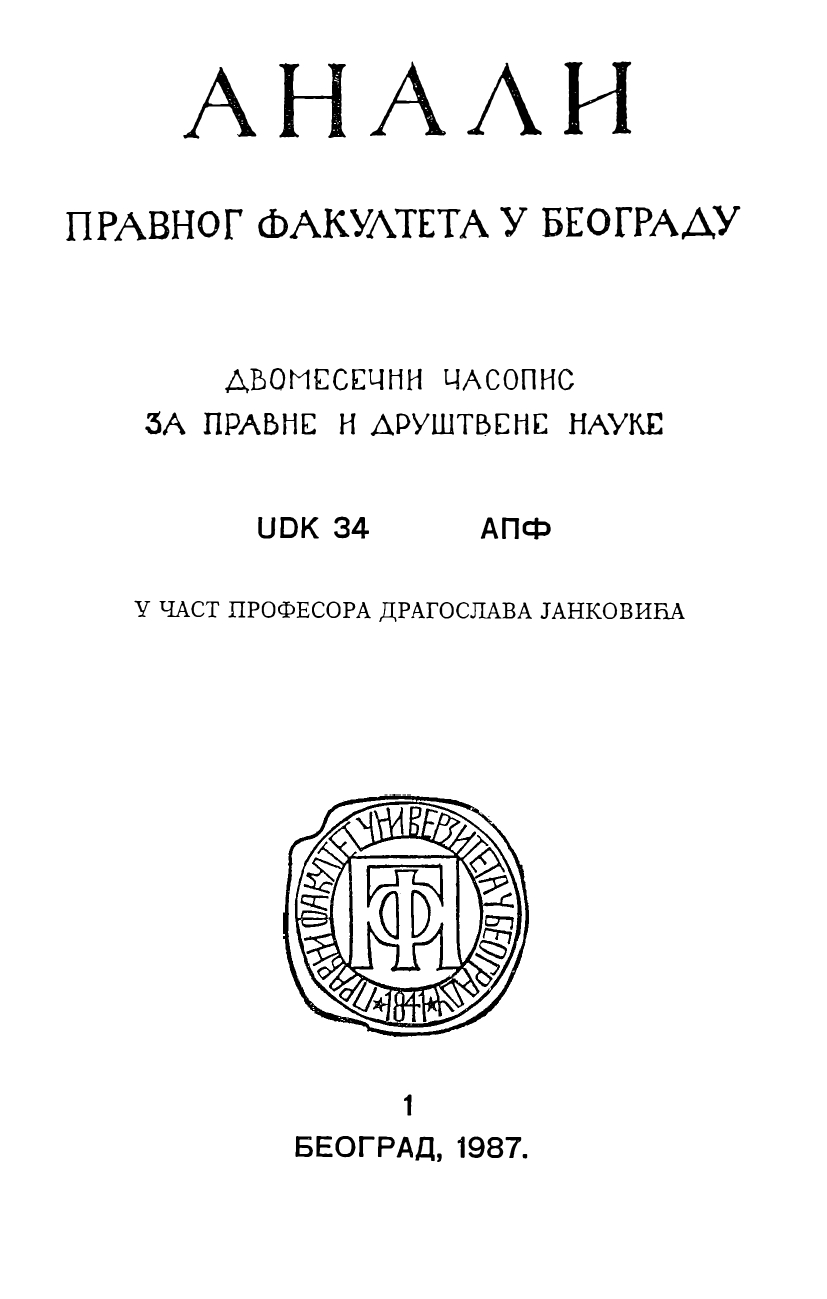ПОКУШАЈ НОРМАТИВНОГ РЕГУЛИСАЊА ПОЛОЖАЈА СКУПШТИНЕ ЗА ВРЕМЕ УСТАВОБРАНИТЕЉА
AN ATTEMPT OF NORMATIVE REGULATION OF THE POSITION OF THE ASSEMBLУ DURING THE TIME OF DEFENDERS OF THE CONSTITUTION
Author(s): Ljubica KandićSubject(s): Law, Constitution, Jurisprudence, Constitutional Law
Published by: Правни факултет Универзитета у Београду
Summary/Abstract: The position of assembly in the period of the defenders of the constitution has not been normatively determined all the way until the Saint Andreas Assembly in 1858. However, there were attempts to realize that either by specific proposals which had not a form of a bill, or by separate projects and the law on the assembly, as well as by some constitutional drafts. The majority of these proposals did not go through the relevant legal procedure. In the attempts of constitutional or statutory determination of the position of the assembly there were wandering and misunderstanding of the processes which took place in Serbia, but also exaggeration and inadequate determination of its position. However, the common characteristic of almost all the proposals and bills has been the fact that they treated the assembly as an institution which should be either a counter-balance to the existing peaks of power, or an institution which would have priority over the duke, namely the council (sovjet). The proposals on legal regulation of the position of the assembly and the constitutional draft were successively submitted in the period from 1841 to 1858. The first proposal has been made by Sima Milutinović-Sarajlija in 1841, then followed the draft constitution by Franjo Zah in 1847, the project of the law on the assembly in 1848 and, finally, the law on the assembly in 1858. The Sima Milutinović's proposal is interesting (he belonged to the group of defenders of the constitution and that is why he was treated as being in that period, although the proposal originates in 1841) but it contains only his personal views on the organisation of state authority in Serbia of that time, as well as his conception on the assembly as a body of power. In his constitutional draft Franjo Zah provides a significant position to the assembly as a body of power. However, in the existing system of power, with the dulce and the council (sovjet) as the supreme bodies of power, Zah’s conception on the assembly could not survive. According to the bill on the assembly submitted in 1848, which was enacted after the Petrov-Day Assembly, the assembly did not obtain a significant position in the system of power. It has been, although, composed of elected delegates, but they were deprived of all significant rights in the decision-making. This bill has expressed also the attitude of the defenders of the constitution regarding the assembly as a body of power. The Law on the Assembly, of October 1858, has been enacted on the occasion of the session of the Saint Andreas Assembly, and it has been drafted along the lines of the 1848 bill. This law on the assembly has even more narrowed down the rights of the assembly as compared to the 1848 project. This law has provided, in addition to the elected deputies, for deputies on the ground of office held: The proposals and decisions of the National Assembly do not have the force of a law until confirmed by the duke and the council. This law on the assembly represents a logical continuation of the policy of the defenders of constitution toward the assembly, as well as their fear from the discontent of masses of the people, which found its expression in that very body.
Journal: Анали Правног факултета у Београду
- Issue Year: 35/1987
- Issue No: 1
- Page Range: 35-48
- Page Count: 14
- Language: Serbian

